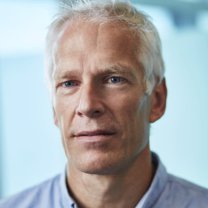Logistics has a considerable impact on the carbon footprint of Philips. The company is enlisting the help of the EngD Software Technology program in creating dashboards to monitor the emissions of freight transport by air, land, and water. The generated insights are being used on all organization levels, up to and including the executive committee.
Read more about it in this Bits@Chips article
“At Philips, we’re committed to bringing our complete value chain emissions in line with the goal to limit global warming to 1.5 degrees Celsius,” says Simon Braaksma, responsible for the company’s climate strategy. “We’ve made all our offices, research labs, factories and distribution centers more energy efficient and we’ve completely switched to renewable electricity sources, mainly through wind and solar farms. As a result, our operations have been 100 percent carbon neutral since 2020.”
To closely monitor its carbon footprint, Philips has set up extensive dashboards. “They provide valuable, interactive insights, in a manageable and accessible way, on where we’re emitting and where we still have to step up to meet our long-term climate ambitions,” Braaksma explains. “They’re now being used throughout Philips as a leading KPI to track the performance against our global purpose.”
The ST trainees helped Braaksma’s Sustainability group build a dashboard that specifically analyzes the carbon emissions in the logistics part of the value chain.
In the creation of the dashboards, Philips enlisted the help of trainees from the EngD Software Technology (ST) program at Eindhoven University of Technology (TUE). “We first came into contact about three years ago,” recalls Braaksma. “We almost immediately saw the benefits of collaboration. In 2020, Yousef Fadila was the first to do his graduation project with us, followed by Parima Mirshafiei in 2021 and LiYang Wang this year. We’ve already enrolled for a fourth project.”
Monthly updates
TUE’s EngD ST is a two-year salaried post-master technological designer program on a doctorate level for top MSc graduates with a degree in computer science or a related field. It prepares them for a career in industry by strengthening their theoretical basis and confronting them with challenging problems from industrial partners. The program has a variety of clients offering complex system/software architecture and design-related challenges. The students learn to develop innovative solutions meeting industry standards while mastering all the aspects of teamwork, different roles and professional skills.
In the three 10-month projects at Philips’ Sustainability group, the ST trainees helped build a dashboard that specifically analyzes the carbon emissions in the logistics part of the value chain. “We move a lot of goods around, from raw materials to finished systems. We rely on a host of shipping companies for air, ocean, parcel and road freight,” elaborates Braaksma. “The input of all these partners needs to be combined to create a complete overview of our carbon emissions. What used to be arduous manual labor has now been fully automated.”
The applications developed with the help of the ST trainees gather, clean and merge the raw input data, after which the emissions are calculated using shipment records and the analysis results are visualized in the logistics emissions dashboard. Fadila contributed to the first version of the dashboard, replacing the largely manual calculation methodology. Building on the result, Mirshafiei augmented the existing air cargo with ocean freight and parcel shipments and included an app to compute the inland and coastal distances. Wang added to this the analysis for road transportation and a new emission calculation system.
The logistics emissions overview is one of the dashboards that are being used on all levels across the entire Philips organization. “We’ve created a whole suite for our sustainability targets, all with the same look and feel,” says Braaksma. “To distinguish the trees from the forest, people only get the insights relevant to them. The logistics emissions dashboard is providing monthly updates to a great many managers within Philips. Every quarter, the information also goes to our executive committee.”
Joining the ST program
From 2 January to 31 October 2024, around 20 trainees from the Software Technology program will be carrying out their final assignments designing and developing software for software-intensive systems. Companies and organizations interested in having one or more trainees participate in operational projects are invited to contact the program for detailed information on the relevant organizational and financial constraints.
Win-win-win
Braaksma highly values the collaboration with TUE’s ST program.
“The collaboration is a win-win-win,” Braaksma concludes. “The trainees get a taste of what it’s like to work at a company like Philips, experiencing the industrial practice, the processes and the people. In return, they solve problems for us in a structured way. And while they’re doing that, we get a taste of what they’re capable of. Software engineers are in high demand and this collaboration gives us the opportunity to win talents for us before they come on the market. Parima is a case in point. She joined us immediately after her graduation.”
Main picture credit: Philips. This article was written in close collaboration with Eindhoven University of Technology’s EngD Software Technology program.




